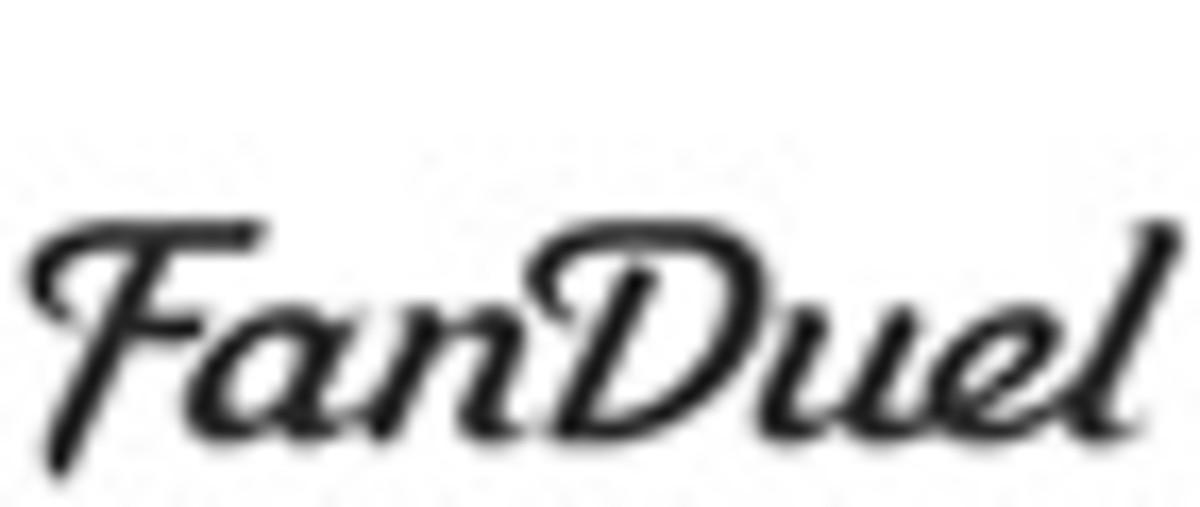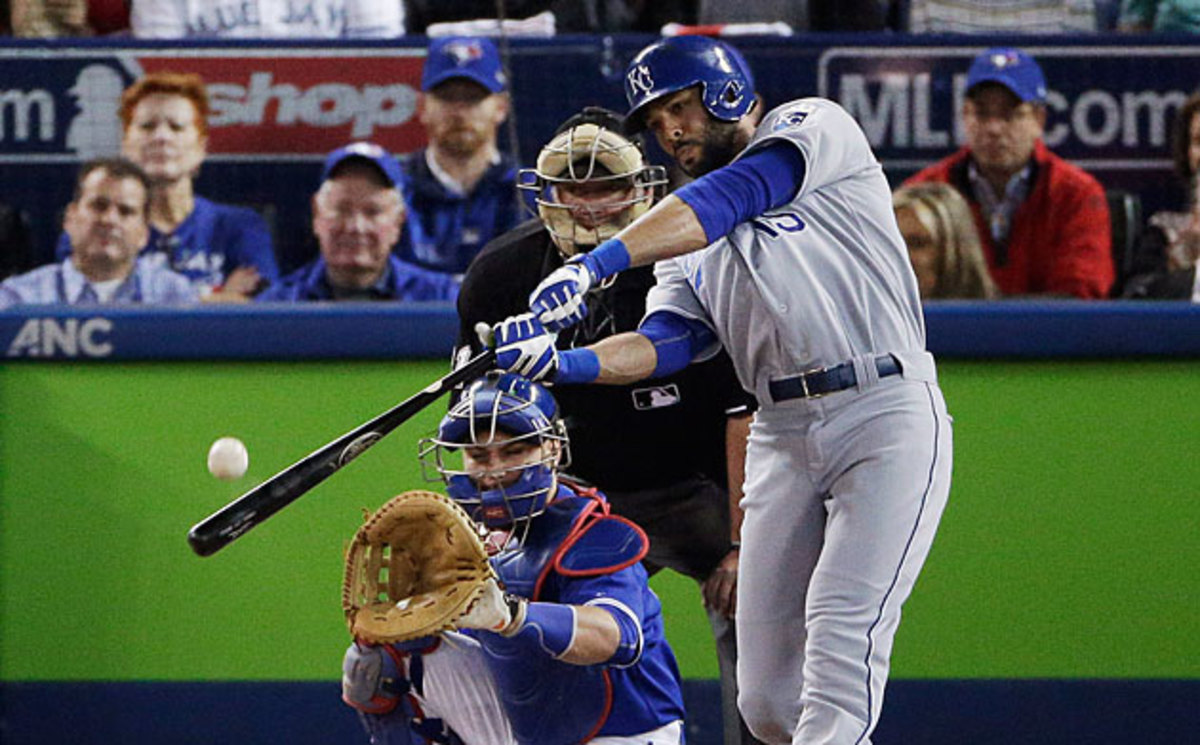Royals' anti-Moneyball approach has them on brink of another pennant

TORONTO — Moneyball is dead.
“Moneyball? No, what’s that?” Royals catcher Salvador Perez said when I asked him if he had seen the movie.
Moneyball, the 2011 movie starring Brad Pitt as Athletics general manager Billy Beane, was a dramatized version of Moneyball, the 2003 book by Michael Lewis, which was a clever narrative of how Oakland approached team building back then. The complexities and nuances of such work—including having Barry Zito, Tim Hudson and Mark Mulder in their primes start 60% of your games—faded beneath the attention given to the offensive approach that emphasized taking pitches, driving up pitch counts and celebrating the base on balls, all of which was sold as exploiting “market inefficiencies.”
“The only sports movie ever made,” said one of the Royals, “in which the team wins nothing at the end.”
Moneyball actually died years ago as bullpens became more specialized, velocity went up, walks declined and run prevention methodologies improved. But the Royals officially have put the toe tag on such an offensive philosophy in today’s game.
On a night for Royals' bats, starter Chris Young secretly shines in Game 4
The Royals—the team that saw the fewest pitches per plate appearance this year, that plays the baseball version of the hurry-up offense, that deploys the most anti-sabermetric leadoff hitter possible without apology—are one win away from reaching the World Series for the second straight year. They dismantled the Blue Jays in Game 4 of the American League Championship Series on Tuesday night to such withering depths that the Jays became the first team in postseason history to run a position player out to the mound, Cliff Pennington. In its 14–2 win, the Royals displayed its typical brute force: smacking every first good pitch that they saw.
“We feel like we can put a lot of runs on the board, especially late in the game,” said Royals second baseman Ben Zobrist, an émigré from Oakland. “In today’s game, it just doesn’t make sense to get to another team’s bullpen, so why worry about the starting pitcher’s pitch count?”
Said first baseman Eric Hosmer, deflecting credit to hitting coach Dale Sveum, “It all stems from Dale. He really emphasizes getting a good pitch to hit and when you get it, drive it. It doesn’t matter if it’s the first pitch—just the first good pitch. There’s a big difference between the quality of an 0–0 curveball and an 0–2 curveball. So why wait for the 0–2 one?”
The Royals saw only 3.70 pitches per plate appearance this year. The four teams in the league still playing Moneyball—the teams with the most pitches per plate appearance—combined for zero postseason wins (Red Sox, Yankees, Indians, Mariners). Kansas City also struck out the fewest times in baseball for a fourth straight year. The Royals swing early, they swing often and they make contact.

On Tuesday, Kansas City swung at 79% of the strikes (league average is 73%) and sent 47 batters to the plate, 21 of whom reached base. They put 32 balls into play and hit 36 foul balls.
Royals' bats come alive, pound way to victory over Blue Jays in Game 4
Nobody better represents the Royals Way more than Alcides Escobar, the feng shui leadoff man for Ned Yost with a .293 on-base percentage this season that is in line with his career mark of .298. (There’s no rational explanation why batting Escobar atop the order works, but there seems to be an ethereal power and harmony to it.) Escobar has batted 19 times in this series. He has seen 48 pitches, or just 2.53 for each plate appearance. Twelve of his 19 plate appearances ended after one or two pitches. He has seen ball two only once in this series. Ball three? He has yet to see one. He hits as if he has to go feed the parking meter.
But what Escobar does is set the tone. They Royals want to play fast, like a basketball team that wants to run or a football team with a no-huddle offense. It’s high-energy baseball. They will hack at the first good pitch they see, which means the pitcher never has the luxury of throwing a get-me-over-pitch for a free strike.
“I imagine it makes it challenging for the pitcher, knowing every pitch will be contested,” said rightfielder Alex Rios.
Two pitches into Game 4, the Royals ambushed Toronto starter R.A. Dickey for a 2–0 lead. Escobar bunted for a single, and Zobrist followed with a home run. Zobrist had previously been so mystified by Dickey’s knuckler (6-for-39) that he tried 23 plate appearances against him as a lefthanded batter and 22 as a righthanded batter. Somewhere in there was a plate appearance in which he switched sides within the at-bat.
“The catcher asked me what I was doing,” Zobrist said, “and I said, ‘Well, I don’t think it makes any difference, anyway.”’
• MORE MLB: Full postseason schedule, start times, TV listings
Since Zobrist was traded from Oakland to Kansas City back in July—about the biggest philosophical leap possible—he swings at more first pitches, swings at more strikes and swings at more pitches overall. Welcome to 2015, Ben.

The Royals kept hacking. Eighteen pitches into the game they led 4–0. Then, in the second, Dickey made a mistake that is almost unfathomable, considering how Kansas City never lets a good pitch pass by without a hack. He fell behind Rios, 2–0. That’s when Dickey decided to throw a fastball, a pitch he likes to throw when he thinks the batter is not swinging. Dickey had thrown 42 fastballs on 2–0 counts; hitters took the surprise pitch 83% of the time. Rios had a different idea.
“I knew he liked to throw the fastball down and away in that spot,” Rios said. “I was looking for it on that pitch.”
Game Changer: How Carlton Fisk's home run altered baseball and TV
Sitting on a rare fastball from Dickey, who thought he would get himself a free strike, Rios ambushed it for a home run. Thirty-one pitches into the game, Kansas City led 5–0. The game effectively was over, what with the Royals showing off the deepest, hardest-throwing bullpen in baseball. The 2–0, 83-mph fastball said everything you need to know about how the Royals swing the bat: pitchers should never assume they will get a free strike.
Now the Blue Jays hand the ball in Game 5 to Marco Estrada, a guy who couldn’t make their rotation out of spring training, to save their season. The way Kansas City has been hitting, it’s like trying to cross a busy eight-lane highway on foot. The Royals are hitting .331 in the series. They have 46 hits and only 22 strikeouts in the four games—and a whopping 102 foul balls.
This way of playing baseball could not be more unlike the hitting philosophies of Moneyball. “This team,” outfielder Jonny Gomes said, “couldn’t care less about pitch counts. Nobody pays attention to that.” Kansas City plays a post-modern version of baseball. Not only do the Royals put the ball in play, but GM Dayton Moore also placed a premium on character in his off-season bargain free agents (Rios, starting pitcher Chris Young, designated hitter Kendrys Morales and reliever Ryan Madson all contributed to the Game 4 win). The team has also built its pitching staff from the back to the front.
“I think you’ll see other teams copy what we’ve done with our bullpen,” Yost said. The Royals have asked their relievers to pick up nearly as many innings (17) this series as what the starters have provided (18), which would have been a disaster a decade ago but now gets you one win away from the World Series.
The series has played to typecast. The Blue Jays, with their home run power but thin bullpen, are a one-trick pony. They are 10–34 when they don’t hit a home run, including 0–3 in this series. The Royals leverage the depth of their lineup and bullpen to wear down teams. Their aggressive offense has everything but a catchy title. Just maybe, in addition to the World Series, they also soon could be headed to a theater near you.
Said Hosmer, “Maybe Dale is going to have a movie made about him one day.”
#http://www.120sports.com/video/v155058514/royals-dominate-game-4
